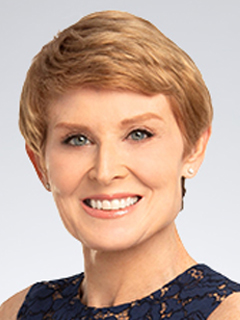Summer heatwave continues
The super core CPI jumped 0.5%.

August 12, 2025
The consumer price index (CPI) rose 0.2% in July, well in line with financial market expectations. That translates to a 2.7% gain from a year ago, the same as the already elevated pace of June. Food prices moved sideways, while food away from home increased by 0.3%. Egg prices continued their descent, falling 3.9% during the month alone, but are still up 16.4% from a year ago. We are finally seeing the stock of chickens and eggs come back following a bout of the bird flu earlier in the year.
One of the major outliers is the price of coffee, which jumped 2.3% in July and is now up 14.5% from a year ago. That is the hottest annual pace since November 2022 and is poised to move much higher given new tariffs on coffee via Brazil, which went into effect August 7.
The cost of food away from home rose 0.3%, with value options at fast-food restaurants partially offsetting persistent gains in full-service restaurants. Food away from home increased by 3.9% from a year ago in July and was up a tick from its annual pace in June. The cost of eating out has accelerated after a brief pause around the turn of the year.
Energy prices dropped by 1.1% during the month. Steel and aluminum tariffs are biting, boosting the cost of canned goods and nonalcoholic drinks, which helped offset gains elsewhere in the index. Prices at the gas pump dropped 2% in July and are now down 9.5% from a year ago.
The core CPI, which strips out the volatile food and energy components, increased 0.3% but with rounding hit 3.1% on a year-over-year basis. That is the hottest pace since February and came despite the outsized role that cooling shelter costs play in the CPI. It has a much higher weight than in the PCE index, which the Federal Reserve targets. Rents remain tepid, while hotel room rates continued to plummet.
Durable goods increased 0.4% last month and gained 1.2% from a year ago. That marks the largest year-over-year increase in big-ticket durable goods since November 2022. Moreover, those gains came despite a sideways movement in vehicle prices. Consumers scrambled to snap up electric vehicles in the wake of the announcement of the new tax bill, which eliminates the tax credit with the start of the new fiscal year on October 1. Nearly one in five new vehicle loans cost households $1,000 or more per month. That is a large hurdle in affordability.
The super core services CPI, which strips out shelter and utility costs, jumped 0.5% in July, its fastest pace since January. That translates to a 3.7% year-over-year pace, which is the fastest annual pace since February. That compares to 2.2% in 2019 and is heading in the wrong direction for the Federal Reserve. Gains were broad based and showed up in airfares, shipping costs, financial services, vehicle insurance and healthcare.
Many hoped that a deceleration in the services sector would cushion the blow of tariffs and help inflation decelerate more rapidly on the other side of the bump due to tariffs. That does not appear to be happening, while the worst of the increase in tariff-induced inflation is still ahead of us. The effective tariffs rate was a little north of 9% in June. That doubled again in early August. The latest round of tariffs will add to those already in the pipeline. The most recent round of tariffs does not have the cushion of front-running that we saw blunt the initial blow of earlier tariffs.
Tariffs are still working their way into consumer prices.

Diane Swonk
KPMG Chief Economist
Bottom Line
Tariffs are still working their way into consumer prices. Brace for more price hikes as we move into late summer and early fall. The pass-through of the most recent rise in tariffs is expected to be faster than the initial round because there was less time to stockpile. That is the wrong direction for the Fed, which is edging toward rate cuts. The September meeting is still a possibility, but only if we see much weaker demand, notably from the labor market, between now and then. We are still betting on two rate cuts prior to the end of the year, with dissent persisting if the Fed does not cut in September. The Fed is set to release another round of economic forecasts at the September meeting. The trajectory for rate cuts should converge with a larger number of participants looking for two instead of one or no rate cuts for the year.
The caveat will be if the president’s temporary replacement for Governor Adriana Kugler is sworn in prior to the September 16-17 Fed meeting. He will no doubt pencil in significantly more cuts than his colleagues, but financial markets are not likely to price those in as his position is currently being touted as a placeholder as opposed to a replacement. It expires at the end of January 2026.
Explore more

Tariffs effects spotty in June CPI
We are sticking to our forecast for one cut in December.

KPMG Economics
A source for unbiased economic intelligence to help improve strategic decision-making.

Dog days of summer: Tariffs start to bite
How tariffs act on the economy.
Subscribe to insights from KPMG Economics
KPMG Economics distributes a wide selection of insight and analysis to help businesses make informed decisions.
Meet our team
